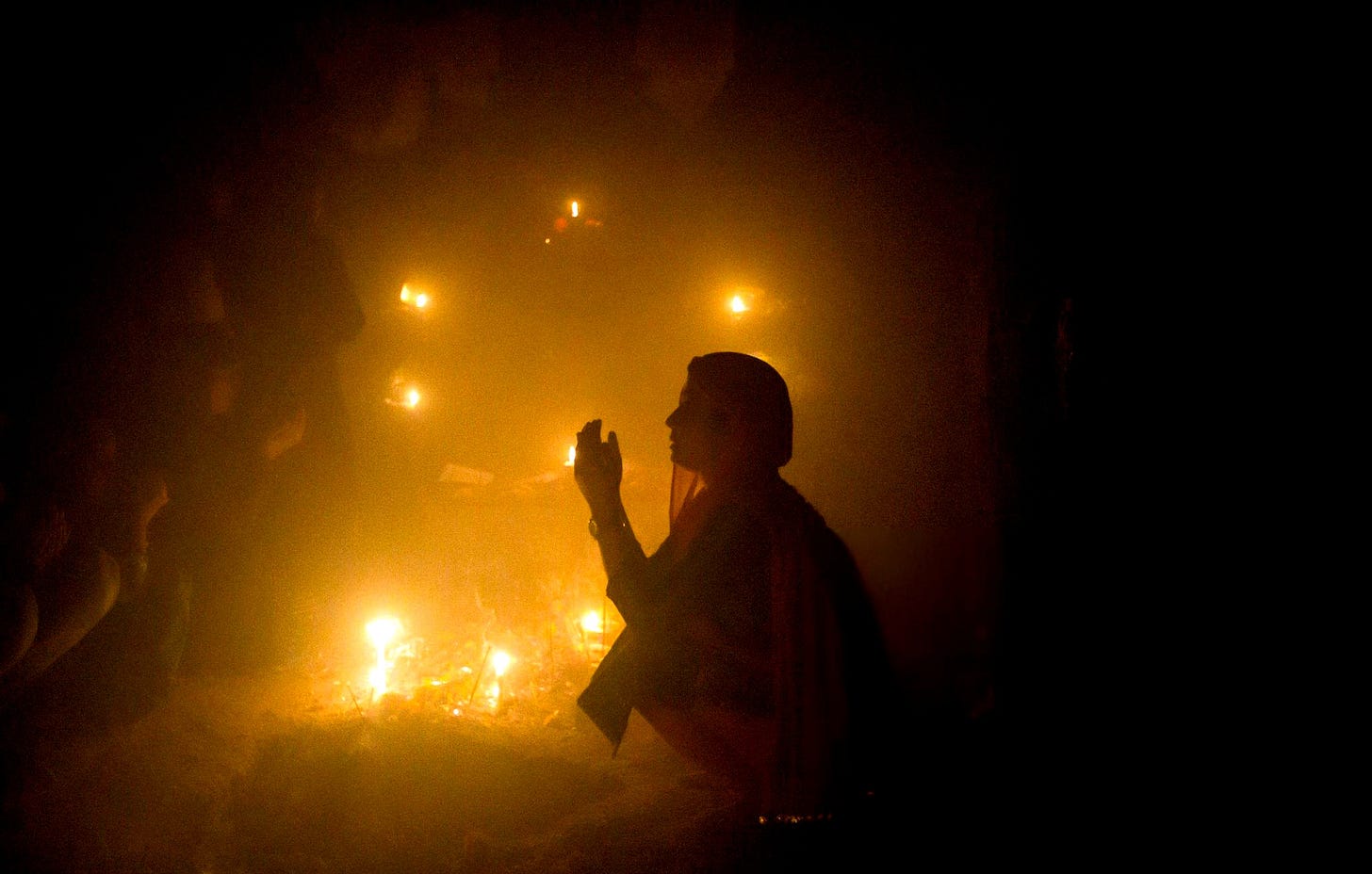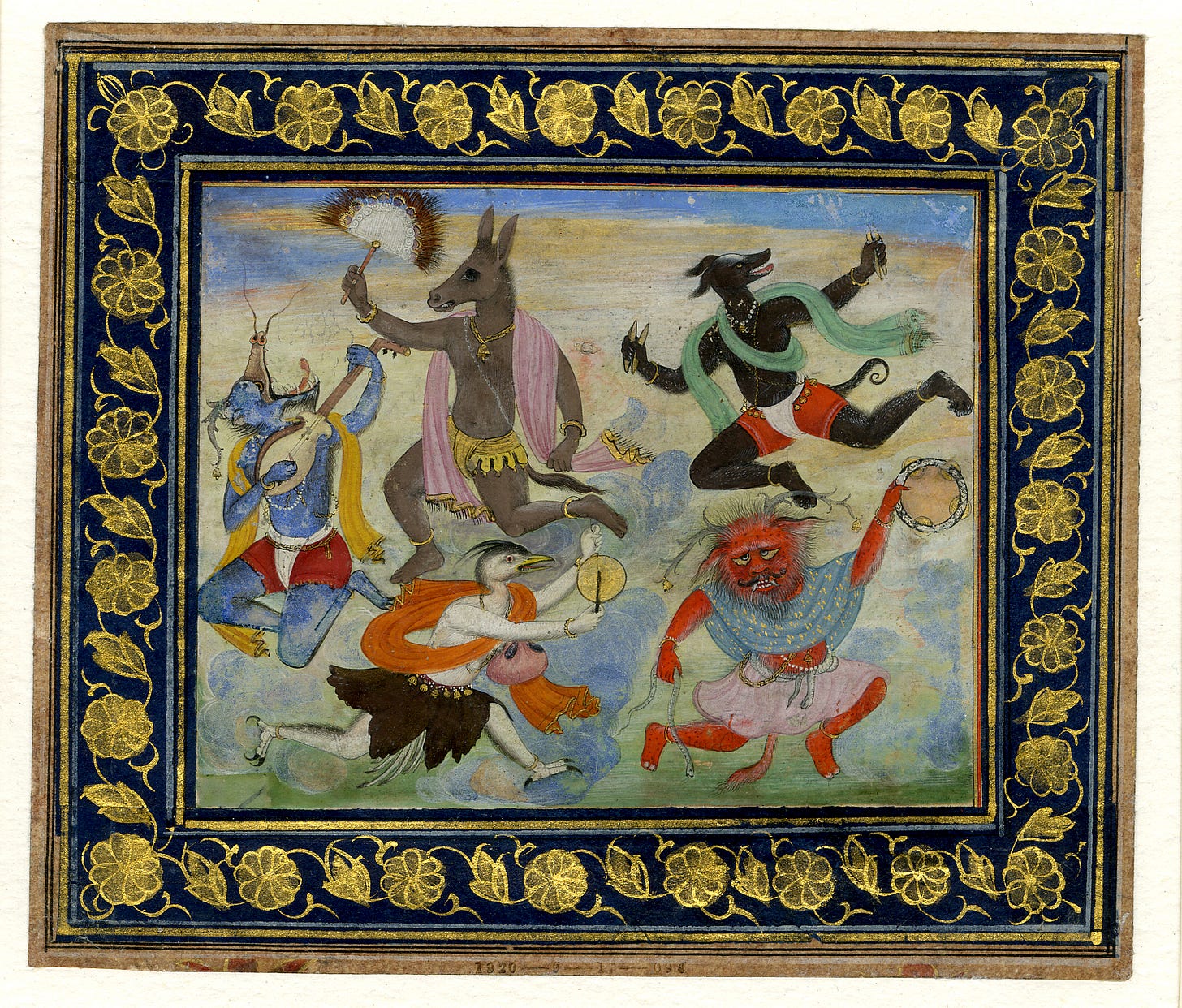Welcome to the Brown History Newsletter. If you’re enjoying this labor of love, please do consider becoming a paid subscriber. Your contribution would help pay the writers and illustrators and support this weekly publication. If you like to submit a writing piece, please send me a pitch by email at brownhistory1947@gmail.com.
Don’t forget to check out our SHOP and our Podcast.

The Jinn-Saints of Feroz Shah Kotla

A spectral moment, a moment that no longer belongs to time, if one understands by this word the linking of modalized presents (past present, actual present: “now,” future present).
—(Derrida, Spectres of Marx)
Every step toward the ruins of Feroz Shah Kotla Fort in Delhi feels like a step into another realm. The crumbling walls, draped in greenery, whisper stories of a bygone era—not as lifeless relics, but as living witnesses. The fort draws people from all walks of life, not just for sightseeing, but for something deeper: to leave behind letters of prayer, plea, or complaint—addressed not to officials or gods, but to the jinn-saints who are said to dwell within its shadows.
In Arabic, jinn is a plural noun meaning “hidden from sight,” derived from the Arabic root جَنّ / جُنّ (pronounced: jann/ junn) meaning “to hide” or “be hidden.” In Islam, it is believed that Allah created them from smokeless fire. Like humans, some are good, others malevolent. The benevolent ones are sometimes invoked to grant wishes. The English word “genie,” the wish-granting figure of folklore and fiction, originates from jinn.
Every Thursday, people arrive at Feroz Shah Kotla with handwritten petitions—pleas and complaints carefully inked onto slips of paper—which they pin to the ancient walls of the fort. These letters, known as Shikwa, are a part of the long tradition of Delhi Sultanate, which was a Perso-Islamic legal form of addressing one’s grievances to a higher authority or a sovereign. People who cannot afford pricey legal battles or those who have been disappointed in them, come here with the faith that their pleadings will not go unheard in the court of djinn-saints, whom they refer to as Baba. They say, “Yeh insaaf ki jagah ha (this is a space of justice).”


Those who believe their prayers have been answered often return to distribute biryani in gratitude—a sight not uncommon within the fort’s compound. These letters reveal a yearning for a more personal relationship with power—one that allows for both vulnerability and hope, whether the subject is a marriage proposal, an illness, or an economic hardship.
#Shikwa: There is a policeman who has been troubling my husband, may he leave Seelampur forever, may he be transferred somewhere else. May Allah grant my husband relief from these policemen. . . . You are a saint and a lover of Allah, please make all our troubles end. . . . If we could get 20,000 rupees from somewhere. Our honour is at stake. It’s the matter of our daughter. Please pray to Allah that we get that money from somewhere. . . I saw you clearly in my dream, so clearly. . . . If you are a jinn, help us in whatever way you can.
#Shikwa: The land of Kam . . . s/o __________ is Khata number 1*4, _____________ village, _________ Khasra no. 279/#. . . . Ya Allah please fulfil the poor man’s wish, may our work be completed without any obstruction or conflict. We are all your slaves, your children. Please fulfil our desire, and our belief. Let the documents of our land be released as soon as possible, let the decision be in our favour, let no one even know about it, and our work be done. Ya Allah, we have suffered a lot of grief, seen a lot of poverty. If you desire it everything is possible. (Chapter 2, p.12. Jinnealogy, Taneja)
These letters act as a form of counter-memory by invoking a precolonial method of addressing grievances and seeking justice —one rooted in spiritual authority rather than the legalistic bureaucracy of the modern nation-state. They offer an alternative to the often-violent and corrupt machinery of postcolonial governance, expressing a kind of faith that the jinn-saints will read each petition carefully, respond with fairness, and even heal ailments. In this sacred space, justice feels more intimate—and more accessible.
The association of Feroz Shah Kotla with justice echoes a broader tradition found in dargahs, or Sufi shrines, across the Indian subcontinent. As scholar Carla Bellamy describes it, this is part of “dargah culture”—a spiritual and social ecosystem unique to Muslim sacred spaces, where people of all faiths come to pray, plead, and hope. These shrines function as parallel institutions of care and justice, open to anyone seeking relief.
But how did this 14th-century fort—a former seat of power for a Sultan—become a sanctuary for spectral pleadings and whispered prayers to jinns?




